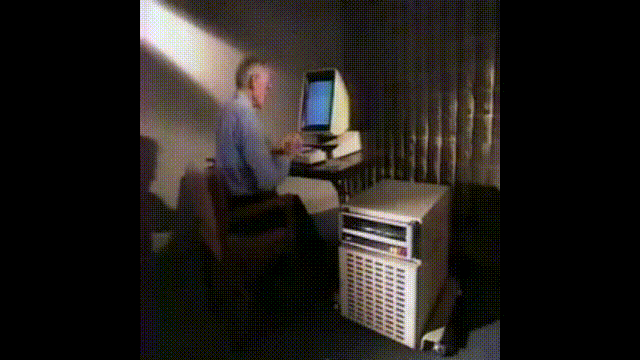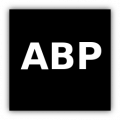User:Joak/graduation/proposal: Difference between revisions
No edit summary |
No edit summary |
||
| Line 253: | Line 253: | ||
margin-left: auto; | margin-left: auto; | ||
margin-right: auto"> | margin-right: auto"> | ||
<references group="footnotes"> | <references group="footnotes"/> | ||
</ol> | </ol> | ||
Revision as of 10:45, 26 November 2014
The following text implies some mistakes evoked by my dyslexia and writing skills! A correction follows soon.
Proposal
..., artists are being led into a technological kindergarten the idea being that the artist
can amuse himself and some of the populace with the gadgetry of modern life.
G. Metzger [1]
Introduction
In the last years, online platforms for distribution, sharing and production of digital art opened there doors for a public at large and picture them selfs as a "revolutionary new way to collect, share and trade art"[2], claiming to "push the possibilities of creativity" [3] or to "place the artist’s work in a broader global visual context free from the hegemonic monetary system" [4]. However, my gradution project will focus on this recent developments, impacts and discussions of those art platforms and how I will bend the conditions of an artwork.
The artwork in the age of Digital Rights Management
The are different definitions of "digital art" or for a "digital artwork". Starting from software as artwork to Nelson Goodman's aesthetic, but due to lack of time[footnotes 1] I assume as 'digital art' a form of data consisting of zeros and ones somewhere on a storage, that somebody would consider as art and is mostly viewed on the internets[footnotes 2](like every kind of art nowadays). As we know, digital data can be copied by pressing the keyboard button combination "ctrl + c" and "ctrl + v", with the mouse clicking on "Copy" and "Paste" or via command line "cp *source file* *destination file*". It has been often assumed, that by this methods of "digital" reproduction the aura of an traditional artwork in the sense of the famous Walter Benjamin artwork essay can not be evoked. In this case, it is similar to that what Benjamin applied to photography. The aura of the digital artwork comes from somewhere else, so argued recently Italian art critic Domenico Quaranta: "The aura of the work of art, removed by the functional design of the screen we use to look at it, its infinite reproducibility without loss of quality, its accessibility and complete lack of financial value, re-emerges in the form of “tag clouds”."[5] Quaranta circumscribes with "tag clouds" a value created by users attention, and furthermore describes "it applies particularly in the case of a form of art that does not generate any “real” economy."[5] Speaking about art and economy, media theorist Lev Manovich explanation for the artist and a artwork made with a mass media, "... the economy of the art system dictated that they would use technologies designed for mass reproduction for the opposite purpose – to create limited editions. (Thus visiting a contemporary art museum we find such conceptually contradictory objects as video tape, edition of 6 or DVD, edition of 3.)"[6] ???Should i summarize Quaranta and Manovich???
There is a bunch of platforms offering exclusive "digital art". One of them is SeditionCite error: Invalid <ref> tag; invalid names, e.g. too manyCite error: Closing </ref> missing for <ref> tag - a term coined by the Swiss art historian Oskar Brätschmann. The exhibition artist doesn't - like his predecessor the court artist - rely on commissions by his king, a lord or an aristocrat. As a patron and distributor for idea of this "free" artist gets the gallery into the game. In this association the gallery functions mostly as his and sometimes as her point of sale. In this case they act as an agent for the artist by exhibiting there works and managing the costumer relations. The ideal customer of course is an ambitious collector who's interested in the artists aesthetics. Thereby his investment he is supporting the cultural identity of society in a healthy relation with the foresight of curators, the judgment of critics, the acceptance of the audience and contextualization by art historians.
This is a romanticized picture of an artist in modernity characterising him or her as a independent agent working purely for his aesthetic needs. This well known stereotype never existed, but it's still deep embedded in the picture of societies of an artist role. As we know only to well, that art is and was instrumentalized by ideology. For instance from the sponsorship of art is a common method by banks to multi-coloredwashing there image (the greenwashing of the artsystem), right up to the choice of certain curators for particular artists as a strategical decision, over the common practice of gallery owners which often board members of public museums to pushing decision in there own (financial) interest, and not to forget the artists which are aware of there economic situation. So it's a logical consequence to assume this is the reason why "flat-ware" is still the main artistic outcome. To summarize, all this circumstance are going far beyond the scope of the intension which had artist in mind for there artworks, but this external influnces are still part of the artwork. The whole association is shaping it in that sense it is hard to suppose the artist as the only actor working on his or her artwork.
The term association is commonly used in Actor-Network-Theory - an "material-semiotic" approach - for an social network between human and non-human actors[7]. In the case of sedition, a wide range of different actors are involved in the network. For me the most interesting part in this association is how the limitation of a digital reproducible artworks originates and therefore creates a framework for Digital Right Managment. What is the connection between the platforms DRM system and the artworks "aura"? What role has the technical setup next to the Terms of Use for this type of "aura"? Is it possible to speak of blackboxing[footnotes 3] the medium of digital artworks? Platforms like Sedition are going beyond providing certain technological framework like for instance Flash(TM). But for now lets summarize this mechanism of Digital Right Managment defined in the whole association with Benjamins notion of the aura, as „ A strange weave of space and time: the unique appearance or semblance of distance, no matter how close it may be.[sonderbares Gespinst aus Raum und Zeit: einmalige Erscheinung einer Ferne, so nah sie sein mag]“[8]
Outcome
My outcome will contain - next to a critical analysis of a particular platform in form of an essay - a project that deals with the condition that those platforms create. At this initial stage, the project will go in one of two directions as a intervention on a platform or a platform as a parody created by myself. First, my plan is a intervention in a distribution system as a disruption of the ongoing behavior and by that I can get information of it's own mechanism. Second, the created platform will mimic a already existing commercial orientated platforms, but at the some time turns the internal mechanism one eighty degrees(180 °) and thereby parodies it's own circumstances. The final exhibition or the graduation show can expect a documentation in form of a installation about the process that my project triggered. I am aware that presenting online projects or process based artworks in a exhibition is always a difficult undertaking, therefore I'm searching for a way to present it as physical installation.
Practical steps
Practice makes perfect! In this initial state of the project, my thoughts are exploded and thereby my possibilities for a final project are indefinitely. Lost in total confusion, and struggling with the conception of project, I'm challenging myself with different experiments:
- A script downloading a number of 3d-objects of thingiverse.com(a huge database for printable 3d-files) and combining them in a new meaning together! Exploring automation and how it could be used for an autonomous agent, that will interact with a platform.
Previous practice
In previous projects, I focused on the unmasking of underling mechanism of the artsystem and artworks sometimes involved in a parodistic way and an exaggeration of a specific action. In piano for 3 seconds(2010) a specific intervention for an exhibition the artwork was destroyed before the opening. The remains were sent to a the archive of an "important" museum for art and media as a jump over of the normal states in the life of an artwork and to archive it there immediately. In the exhibition viewers could only see the conformation of the postal order. In the case of Gsell_1(2011) the artwork willl destroy itself by sawing on the own woodbranch. It is connected to the idea of auto-destructive art. The well known Artblockplus(2013) - was realized during my first year in the PZI - is an addon/extension for Firefox and Chrome internetbrowsers to help the user blocking art. In Analysis of 20 artworks on the assembly line(2013) I applying statistical analysis(in this case a computer vision object detection) to 20 images of artworks and presented the graphical outcome on a running assembly line.
References
-
<references>
Footnotes
- ↑ Metzger, G 1969, Automata in history
- ↑ http://www.seditionart.com/
- ↑ https://devart.withgoogle.com/
- ↑ https://cointemporary.com/about/
- ↑ 5.0 5.1 p.127, Quaranta, D 2013, Beyond New Media Art, LINK Editions, Brescia.
- ↑ Manovich, L 2001, "Post-media Aesthetics" in Lev Light Reader, eds. A Brouwer, J Swager, C Zomer and E Wijenbergh, Second Tuesday, Amsterdam
- ↑ HOW to reference???
- ↑ Benjamin, W 1931, Little History of Photography




